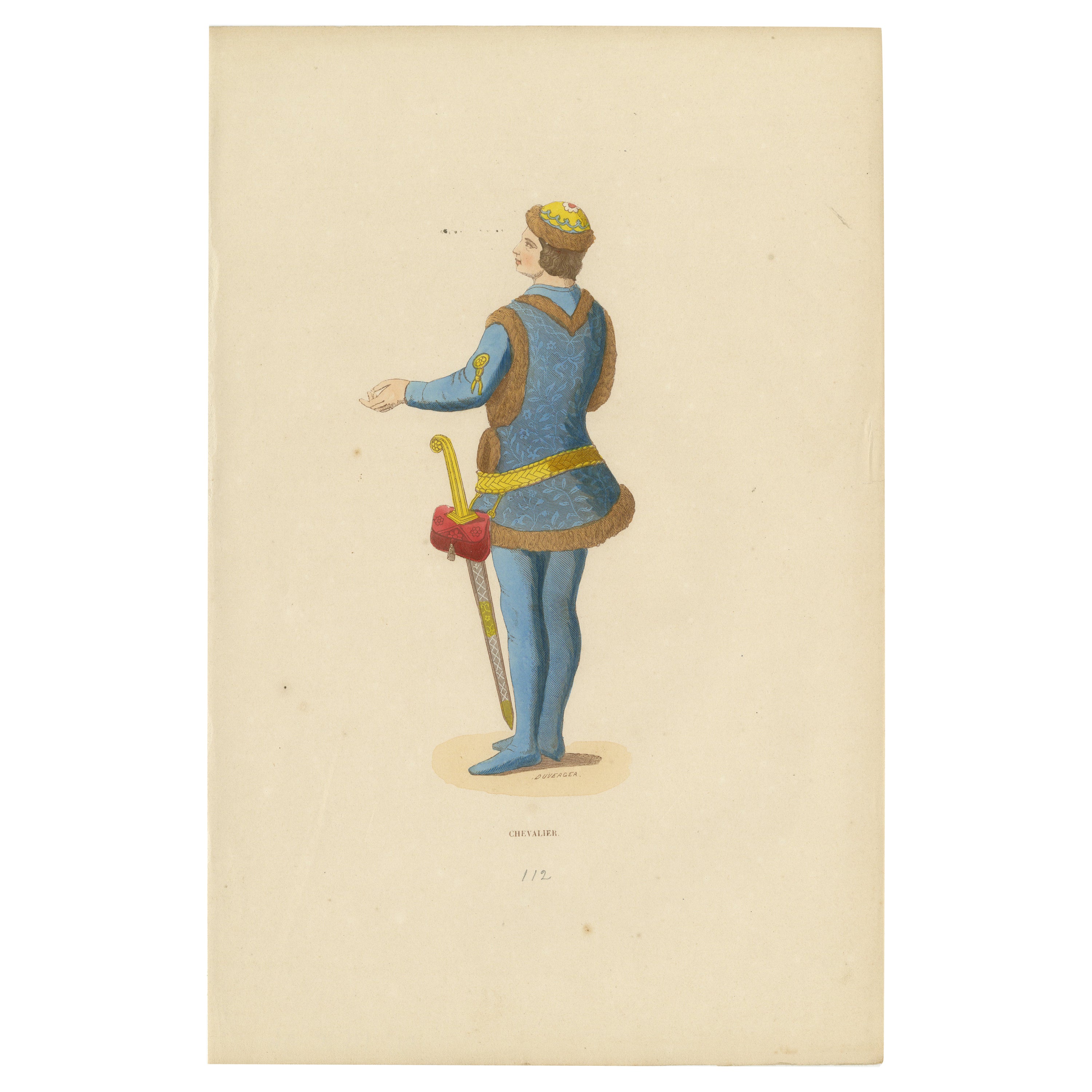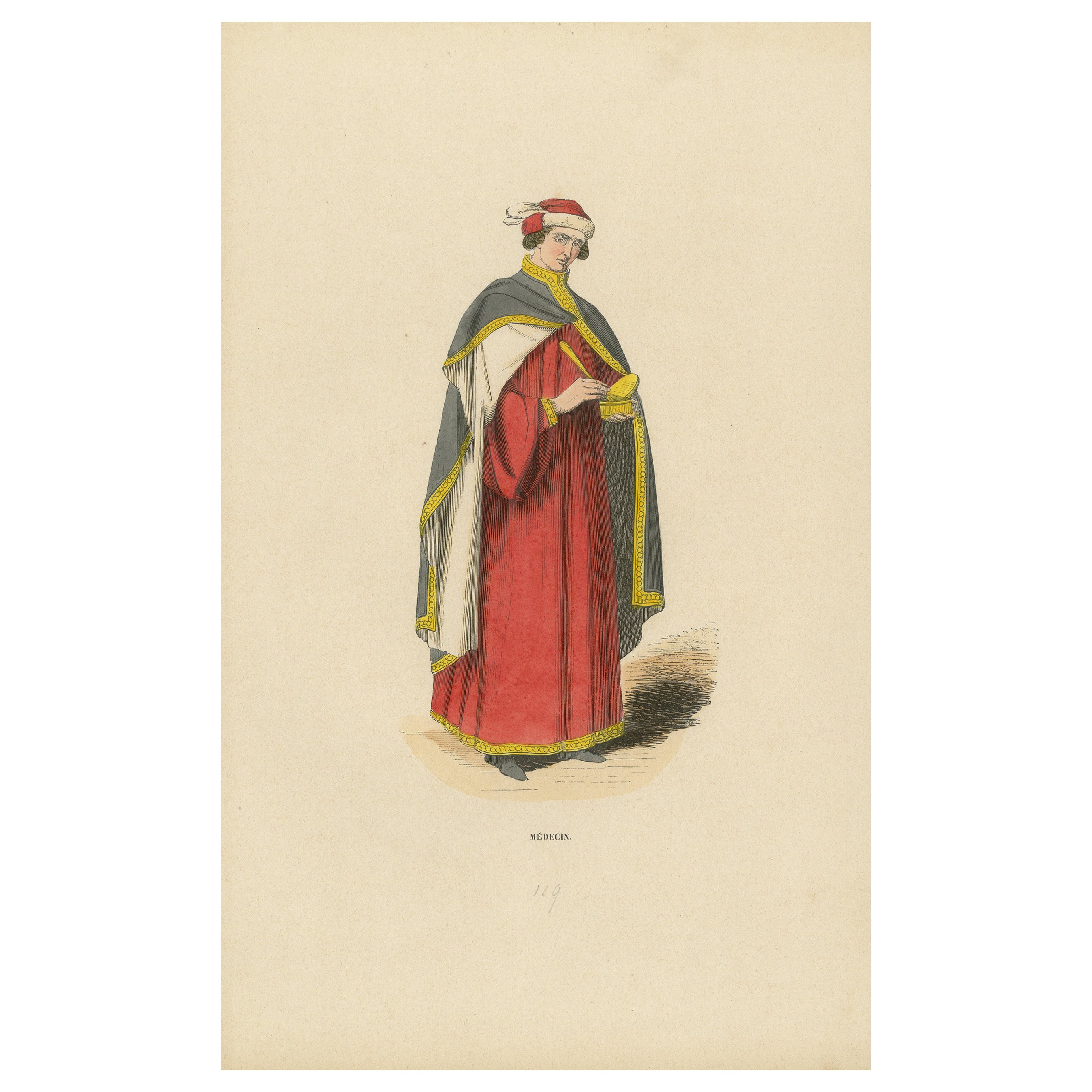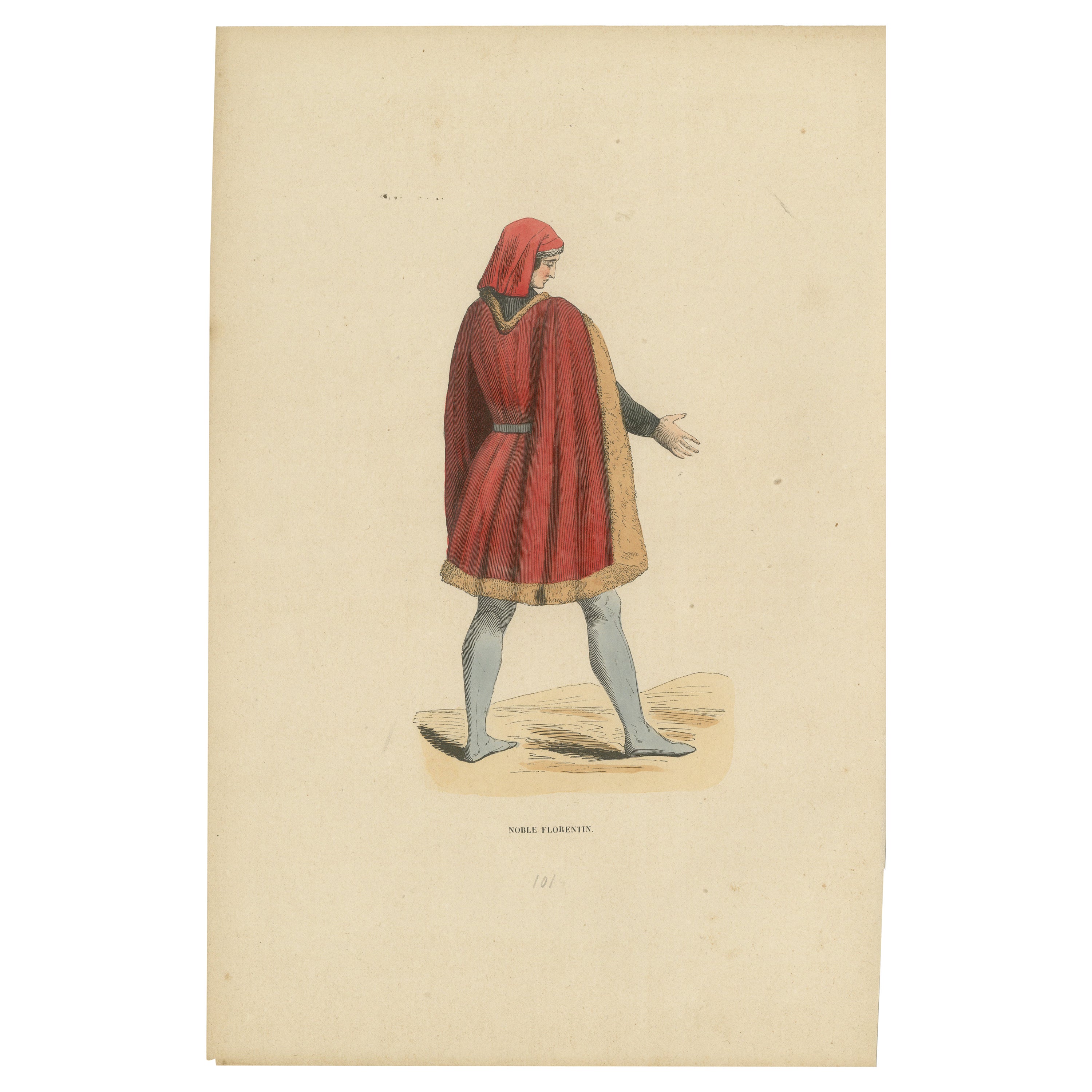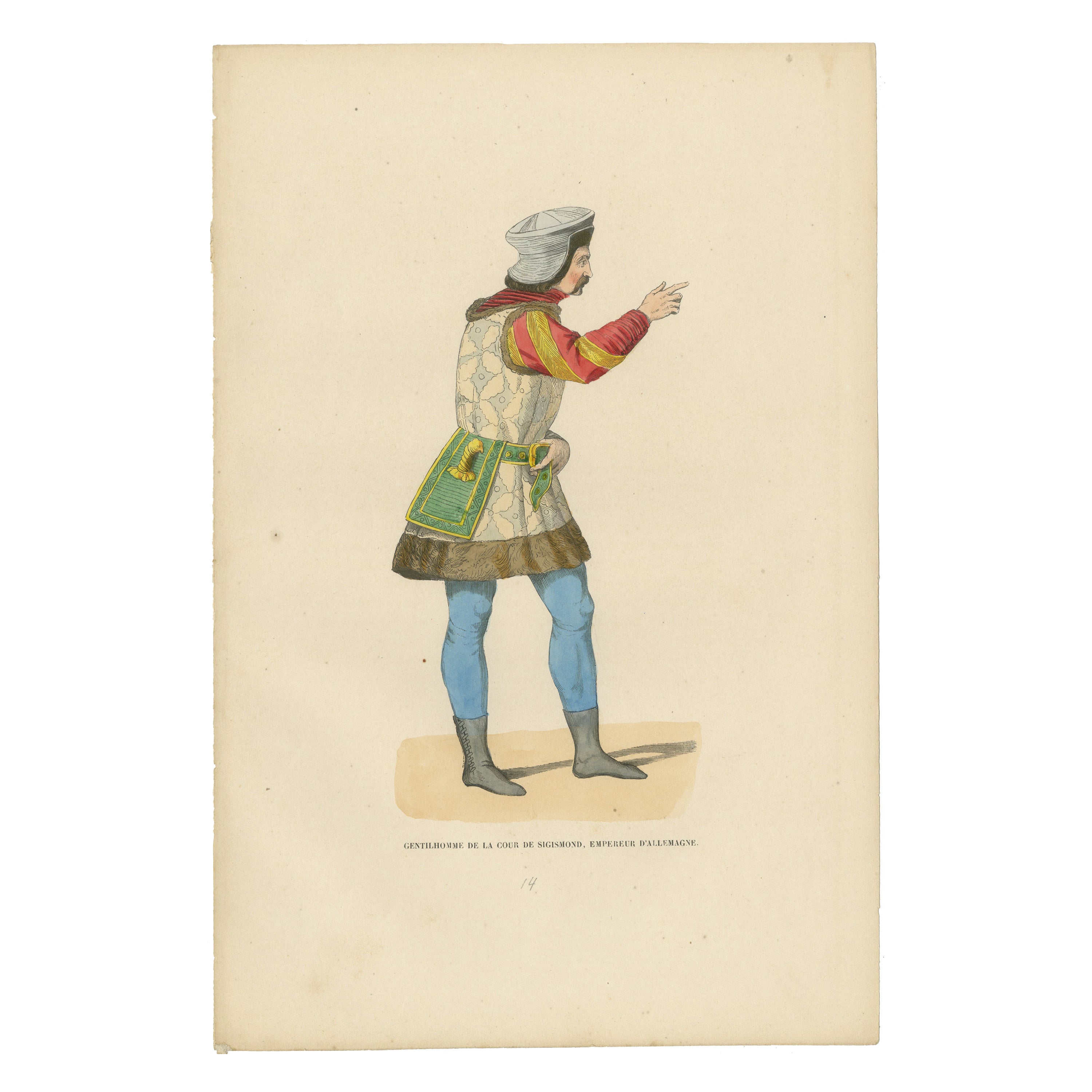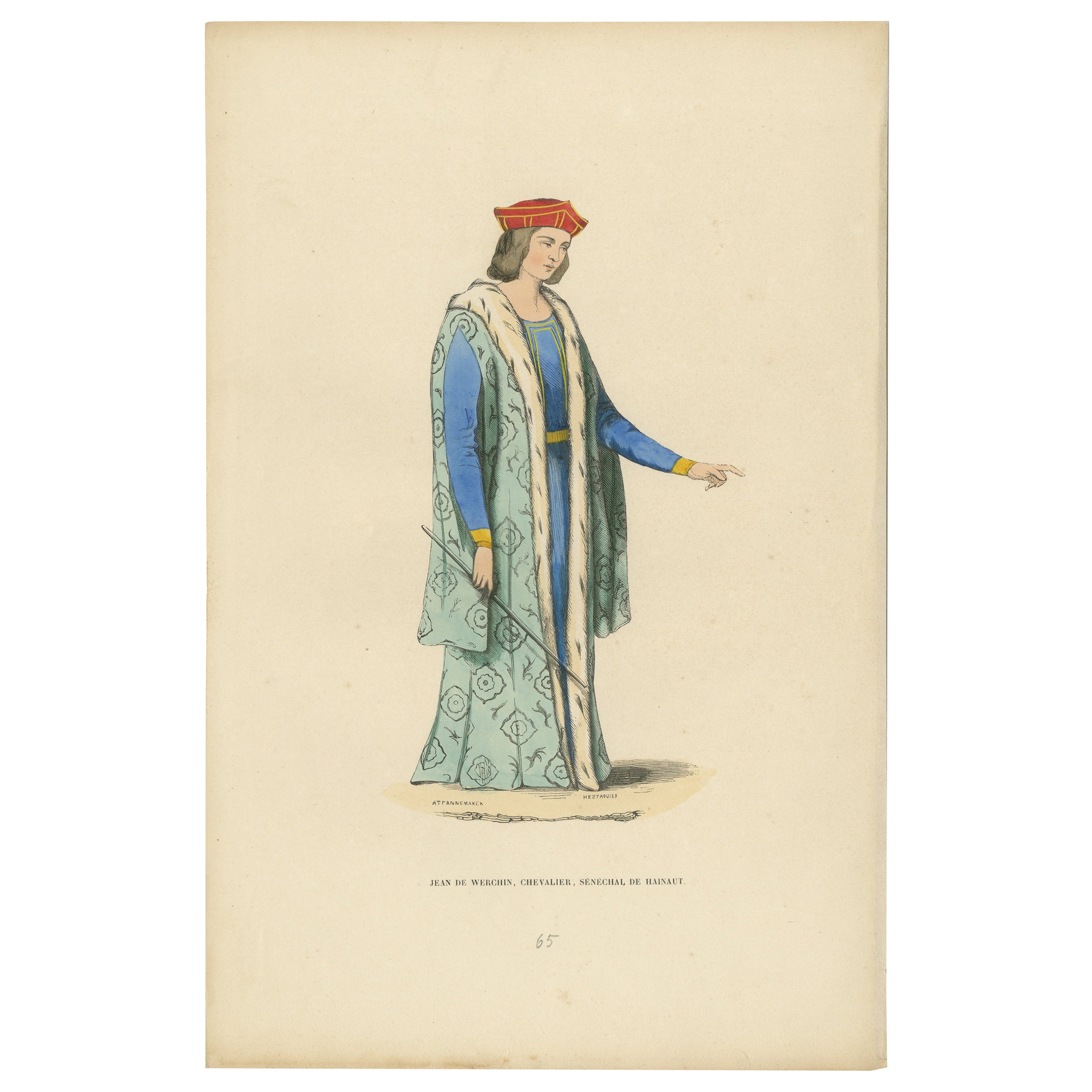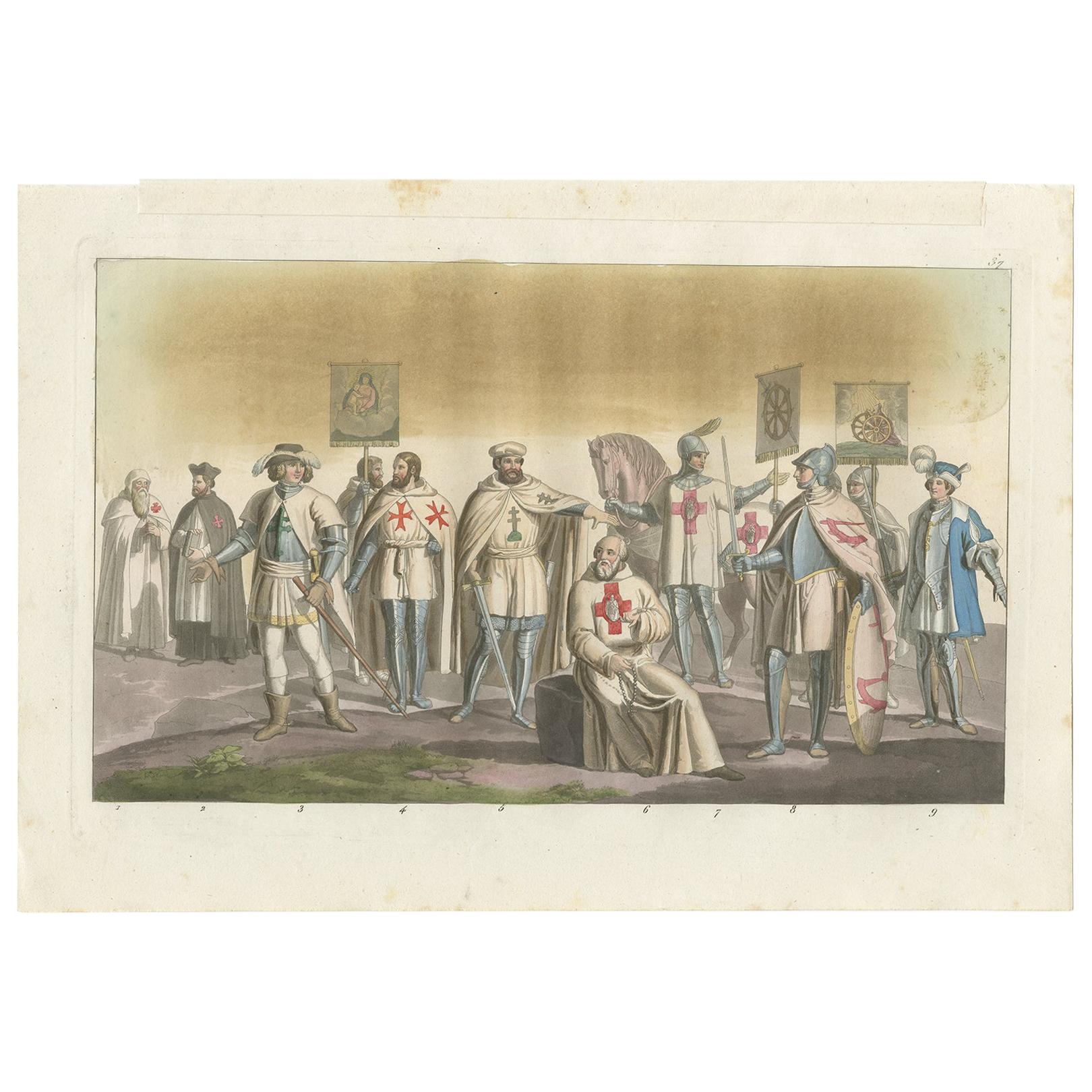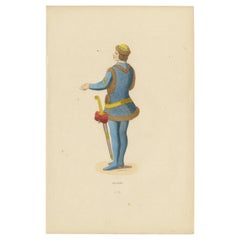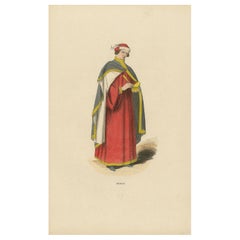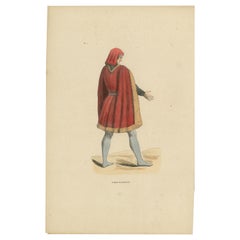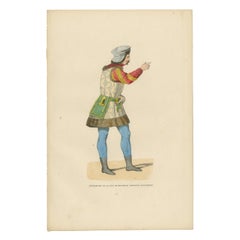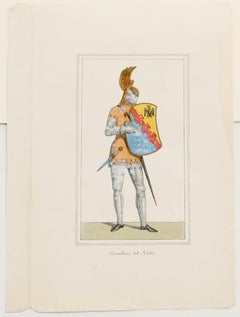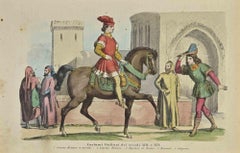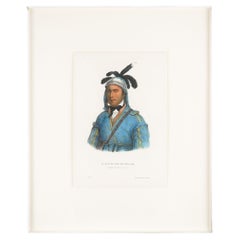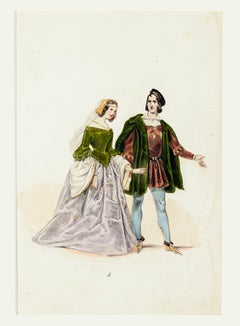Items Similar to The Medieval Herald: A Portrait of Authority and Message, 1847
Want more images or videos?
Request additional images or videos from the seller
1 of 6
The Medieval Herald: A Portrait of Authority and Message, 1847
$143.78
$179.7220% Off
£107.01
£133.7720% Off
€120
€15020% Off
CA$196.94
CA$246.1720% Off
A$219.04
A$273.8020% Off
CHF 114.38
CHF 142.9720% Off
MX$2,665.47
MX$3,331.8420% Off
NOK 1,460.75
NOK 1,825.9320% Off
SEK 1,369.92
SEK 1,712.4020% Off
DKK 913.52
DKK 1,141.9020% Off
Shipping
Retrieving quote...The 1stDibs Promise:
Authenticity Guarantee,
Money-Back Guarantee,
24-Hour Cancellation
About the Item
Title: "The Medieval Herald: A Portrait of Authority and Message"
Description: This print depicts a medieval herald, an essential figure in times of war and peace for communication and diplomacy. Dressed in a prominent red cape over a white tunic, the herald is captured extending his arm as if to deliver a proclamation or to command attention. His tunic is adorned with what appears to be a coat of arms, indicating his service to a noble house or kingdom.
His head is covered with a metal helmet, signifying readiness for war, yet his stance is open and unguarded, characteristic of his role as a messenger rather than a combatant. The simplicity and practicality of his boots and hose contrast with the formality of his upper garments, reflecting the dual nature of his duties—both in the courts and on the battlefields.
This figure embodies the weight of his responsibilities as a carrier of news and declarations, standing as a bridge between leaders and subjects, nobility and common folk. The image is a snapshot of the medieval social hierarchy and the various roles that sustained it..
The colors have a nice glow over them. Historically, egg whites, known as glair, and sometimes egg yolk were indeed used in illumination and painting, particularly in manuscripts, to give colors a brighter appearance and to add a sheen or gloss to the work. This technique was quite common during the Middle Ages and into the Renaissance.
Egg whites can be applied as a varnish over pigments to enhance their brightness and to protect the colors. This application could make the colors appear more vivid and also add a slight glossy sheen to the surface of the image.
Egg whites can be applied as a varnish over pigments to enhance their brightness and to protect the colors. This application could make the colors appear more vivid and also add a slight glossy sheen to the surface of the image.
Egg yolk, on the other hand, was commonly used as a binding agent in paint. It forms the basis of tempera paint, a medium that was widely used before the advent of oil painting. Egg yolk helps to create a durable and long-lasting color that adheres well to various surfaces.
In the context of the print from 1847, it's less likely that egg whites or yolks were used directly on the print, as by that time, commercial printing processes would have been more advanced and less reliant on such manual methods. However, if this print is a representation of an earlier style or is meant to mimic the appearance of hand-painted manuscripts, the original artists might have employed techniques or materials that gave a similar effect to those achieved with egg-based binders and varnishes.
- Dimensions:Height: 10.63 in (27 cm)Width: 7.09 in (18 cm)Depth: 0 in (0.02 mm)
- Materials and Techniques:
- Period:
- Date of Manufacture:1847
- Condition:Good. Overal light toning and light soiling but the image itself clean and hand-colored almost 200 years ago and still in expliciet colors. Aged paper with typically warm, yellowish-brown hue, mostly around the edges. Study the images carefully.
- Seller Location:Langweer, NL
- Reference Number:Seller: BG-13635-1401stDibs: LU3054337929902
About the Seller
5.0
Recognized Seller
These prestigious sellers are industry leaders and represent the highest echelon for item quality and design.
Platinum Seller
Premium sellers with a 4.7+ rating and 24-hour response times
Established in 2009
1stDibs seller since 2017
2,502 sales on 1stDibs
Typical response time: <1 hour
- ShippingRetrieving quote...Shipping from: Langweer, Netherlands
- Return Policy
Authenticity Guarantee
In the unlikely event there’s an issue with an item’s authenticity, contact us within 1 year for a full refund. DetailsMoney-Back Guarantee
If your item is not as described, is damaged in transit, or does not arrive, contact us within 7 days for a full refund. Details24-Hour Cancellation
You have a 24-hour grace period in which to reconsider your purchase, with no questions asked.Vetted Professional Sellers
Our world-class sellers must adhere to strict standards for service and quality, maintaining the integrity of our listings.Price-Match Guarantee
If you find that a seller listed the same item for a lower price elsewhere, we’ll match it.Trusted Global Delivery
Our best-in-class carrier network provides specialized shipping options worldwide, including custom delivery.More From This Seller
View AllMedieval Knight: Heraldry and Valor in 15th Century Garb, 1847
Located in Langweer, NL
Title: "Chevalier" (Knight)
Description: This 1847 hand-colored engraving from the "Costume du Moyen Age" series depicts a "Chevalier," the French term for a knight. The image illus...
Category
Antique 1840s Prints
Materials
Paper
$143 Sale Price
20% Off
Attire of a Medieval Scholar: The Learned Physician of the Middle Ages, 1847
Located in Langweer, NL
Title: "Attire of a Medieval Scholar: The Learned Physician of the Middle Ages"
This hand-colored lithograph, titled "Médecin" in the original French, is a detailed portrayal of a m...
Category
Antique 1840s Prints
Materials
Paper
$143 Sale Price
20% Off
Florentine Nobleman of the Middle Ages, 1847
Located in Langweer, NL
Title: "Civilian Costume at the End of the 15th Century"
Description: The image is a print from a series the "Costume du Moyen Age" dated 1847, and titled "Costume Civil de la Fin du XVe Siècle," which translates to "Civilian Costume at the End of the 15th Century." It showcases a man of status, possibly a noble or a wealthy burgher, standing in a poised and confident manner.
He is attired in an ornate cloak covered in a complex pattern of fleur-de-lis and cross motifs, indicative of wealth and possibly a connection to royalty or high social rank. The cloak is open at the front to reveal a blue doublet with a belt, and he wears red hose—a fashion staple of the late medieval period. His footwear is also red, which stands out against the more subdued tones of his outfit.
On his head, he sports a fur-trimmed hat, adding to the luxuriousness of his attire. In one hand, he holds a long staff, which serves as both a walking aid and a symbol of authority. His other hand rests on the hilt of a dagger, further indicating his readiness to defend his status or engage in the political or civic matters of his time.
The artist has skillfully rendered the textiles and accessories with great care, emphasizing the fashion and social cues of the late 15th-century European society.
The colors have a nice glow over them. Historically, egg whites, known as glair, and sometimes egg yolk were indeed used in illumination and painting, particularly in manuscripts, to give colors a brighter appearance and to add a sheen or gloss to the work. This technique was quite common during the Middle Ages...
Category
Antique 1840s Prints
Materials
Paper
$124 Sale Price
20% Off
Courtly Splendor: A Nobleman at Emperor Sigismund's Court, 1847
Located in Langweer, NL
The image depicts a man identified as a "Gentilhomme de la cour de Sigismond, empereur d'Allemagne," which translates to "Gentleman of the court of Sigismund, Emperor of Germany."
This individual is portrayed in a profile stance, dressed in attire that is indicative of the high-status courtiers during the time of Emperor Sigismund, who reigned in the early 15th century. He is wearing a turban-like headgear, which reflects the influence of Eastern fashion on European court attire, possibly due to the Ottoman influence or the general exchange of culture during the Crusades and subsequent interactions.
His doublet is richly patterned and he has puffed sleeves in red, which were fashionable among the nobility during the period. The garment is accented with a decorative belt that holds what appears to be a purse or a pouch. He also sports tight blue hose and pointed shoes, which complete the ensemble typical of a nobleman or a high-ranking court official in the Holy Roman Empire.
Egg whites can be applied as a varnish over pigments to enhance their brightness and to protect the colors. This application could make the colors appear more vivid and also add a slight glossy sheen to the surface of the image.
Egg yolk, on the other hand, was commonly used as a binding agent in paint. It forms the basis of tempera paint, a medium that was widely used before the advent of oil painting. Egg yolk helps to create a durable and long-lasting color that adheres well to various surfaces.
In the context of the print from 1847, it's less likely that egg whites or yolks were used directly on the print, as by that time, commercial printing processes would have been more advanced and less reliant on such manual methods. However, if this print is a representation of an earlier style or is meant to mimic the appearance of hand-painted manuscripts...
Category
Antique 1840s Prints
Materials
Paper
$153 Sale Price
20% Off
Jean de Werchin, a Knight and Seneschal of Hainaut: The Knight's Poise, 1847
Located in Langweer, NL
Title: "Jean de Werchin: The Knight's Poise"
Description: This print illustrates Jean de Werchin, a knight and seneschal of Hainaut, captured in a moment of courtly grace. His postu...
Category
Antique 1840s Prints
Materials
Paper
$115 Sale Price
20% Off
The Chivalric Orders of the Holy Land – A 19th-Century Vision, 1831
Located in Langweer, NL
Title: The Chivalric Orders of the Holy Land – A 19th-Century Vision
Description: This finely detailed and beautifully hand-colored lithograph is an original antique print from ...
Category
Antique Mid-19th Century Prints
Materials
Paper
You May Also Like
Cavalier - Hand-Colored Lithograph - 19th Century
Located in Roma, IT
Cavalier is an original hand-colored lithograph on paper realized by an Anonymous artist of the XIX century, it represents a cavalier in his particular costume with shield through ha...
Category
19th Century Modern Portrait Prints
Materials
Lithograph
Costumes of the 13th and 14th centuries - Lithograph - 1862
Located in Roma, IT
Italian costumes of the 13th and 14th centuries is a lithograph on paper realized in 1862.
The artwork belongs to the Suite Uses and customs of all the peoples of the universe: " Hi...
Category
1860s Modern Figurative Prints
Materials
Lithograph
O-Poth-Le-Yo-Ho-Lo by McKinney & Hall, 1842
Located in Kenilworth, IL
Hand colored lithograph portrait of "O-Poth-Le-Yo-Ho-Lo," a Creek Chief & speaker of the Councils, after the oil on canvas portrait by Charles Bird King. The lithographic portrait is from McKinney...
Category
Antique 1840s American Prints
Materials
Paper
Ancient Costume - Original Lithograph - Mid 19th Century
Located in Roma, IT
Ancient Costume is an original lithograph hand-colored, realized by an anonymous artist of the XIX century
The state of preservation of the artwork is...
Category
Mid-19th Century Figurative Prints
Materials
Lithograph
Seventeenth-Century Cost - Original Hand-color Lithograph - 19th Century
Located in Roma, IT
Seventeenth-Century Costume is an original hand-colored lithograph on paper realized by an Anonymous artist of the 19th Century, it represents a standing man in this periodical costu...
Category
19th Century Modern Figurative Prints
Materials
Lithograph
Le Impératrice Eugénie Lithograph, c.1850s
Located in Savannah, GA
A large hand-colored lithograph entitled “Le Impératrice, Compiegne,” after the painting by Jean Victor Adam (1801-1866), circa 1850s. Depicted is the Empress Eugénie de Montijo, wi...
Category
Antique Mid-19th Century French Other Prints
Materials
Glass, Wood, Paper
More Ways To Browse
Medieval Head
Art Deco Glass Shelving
Astronomical Clock
Baker New World Collection
Baroque Headboard
Bear Bookends
Bi Discs
Birds Of Paradise China
Black Cerused Dining Table
Black Iron Beds
Black Victorian Bed
Blanket Chest Dome
Boston Sculpture Company
Boston Terrier
Bow Front Glass Cabinet
Brass Antelope
Brass Crane Bird
Brass Elephant Tusks
